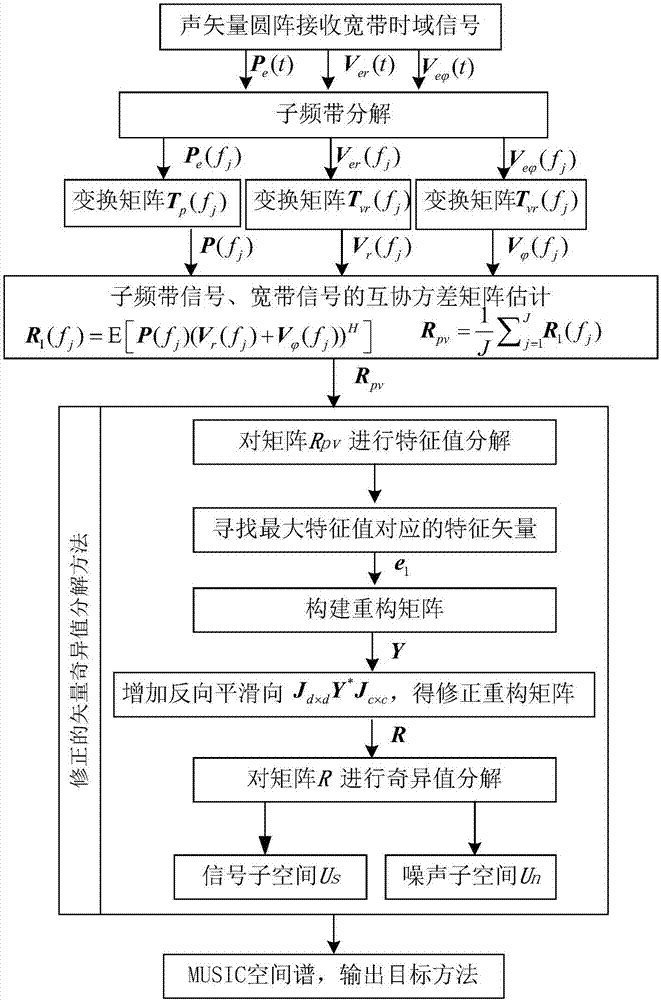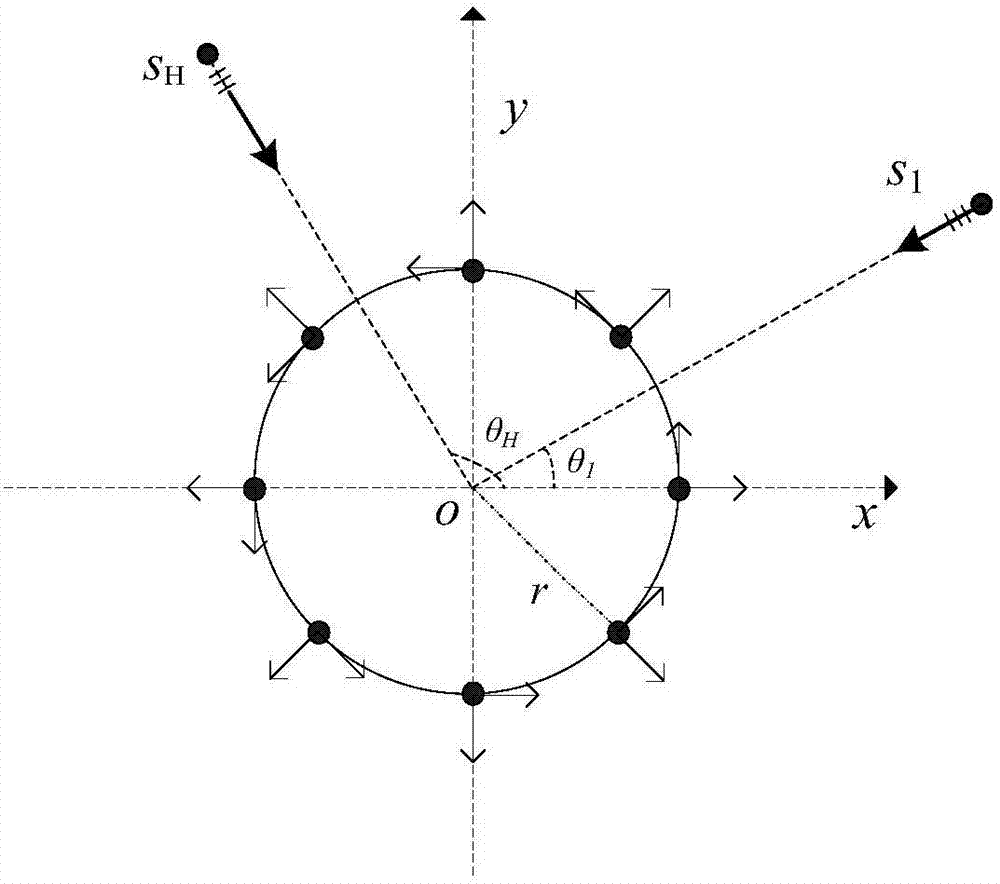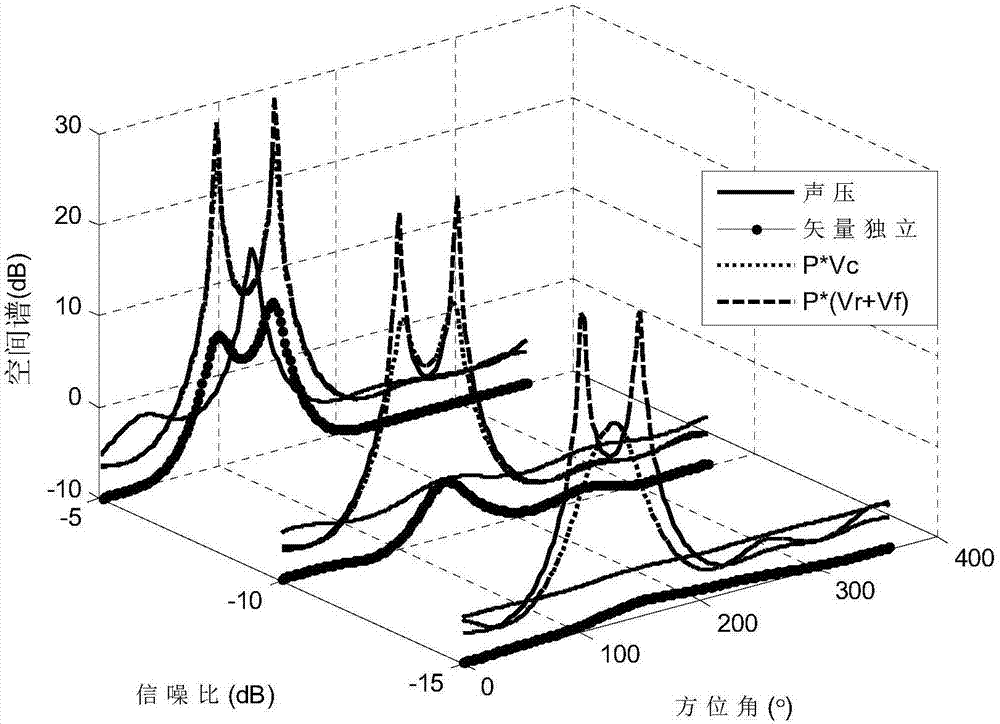Direction-of-arrival estimation method for acoustic vector circular array broadband coherent source based on vector singular value decomposition
A singular value decomposition and azimuth estimation technology, which is applied in directions such as ultrasonic/sonic/infrasonic direction finders, which can solve the problem that the target azimuth cannot be estimated effectively, achieve good application prospects, and solve the difficulty of coherent source resolution and strong spatial resolution. effect of ability
- Summary
- Abstract
- Description
- Claims
- Application Information
AI Technical Summary
Problems solved by technology
Method used
Image
Examples
example
[0078] The simulation adopts an acoustic vector circular array with 8 array elements uniformly arranged, and the radius of the circular array is 0.35m; the signals of the two coherent sound sources are respectively s 1 (t),s 2 (t), where s 1 (t) is a broadband signal of 500-2500Hz, and s 2 (t) = αs 1 (t), α is a constant that does not change with time. The two coherent signals are respectively from θ 1 =100°, θ 2 =100° incident to the sound vector circular array, the sampling frequency is 51.2×2.56kHz, the integration time is T=1s, the wideband time domain signal is divided into 128 segments, the overlapping points of each segment is 0, and 4096 discrete Fourier points are made for each segment Transformation, the working frequency band is divided into J=63 parts.
[0079] image 3 is sound pressure, vector independent, P*V c as well as Spatial spectrum results of two joint processing methods of sound pressure and vibration velocity. The comparative analysis shows t...
PUM
 Login to View More
Login to View More Abstract
Description
Claims
Application Information
 Login to View More
Login to View More - R&D
- Intellectual Property
- Life Sciences
- Materials
- Tech Scout
- Unparalleled Data Quality
- Higher Quality Content
- 60% Fewer Hallucinations
Browse by: Latest US Patents, China's latest patents, Technical Efficacy Thesaurus, Application Domain, Technology Topic, Popular Technical Reports.
© 2025 PatSnap. All rights reserved.Legal|Privacy policy|Modern Slavery Act Transparency Statement|Sitemap|About US| Contact US: help@patsnap.com



